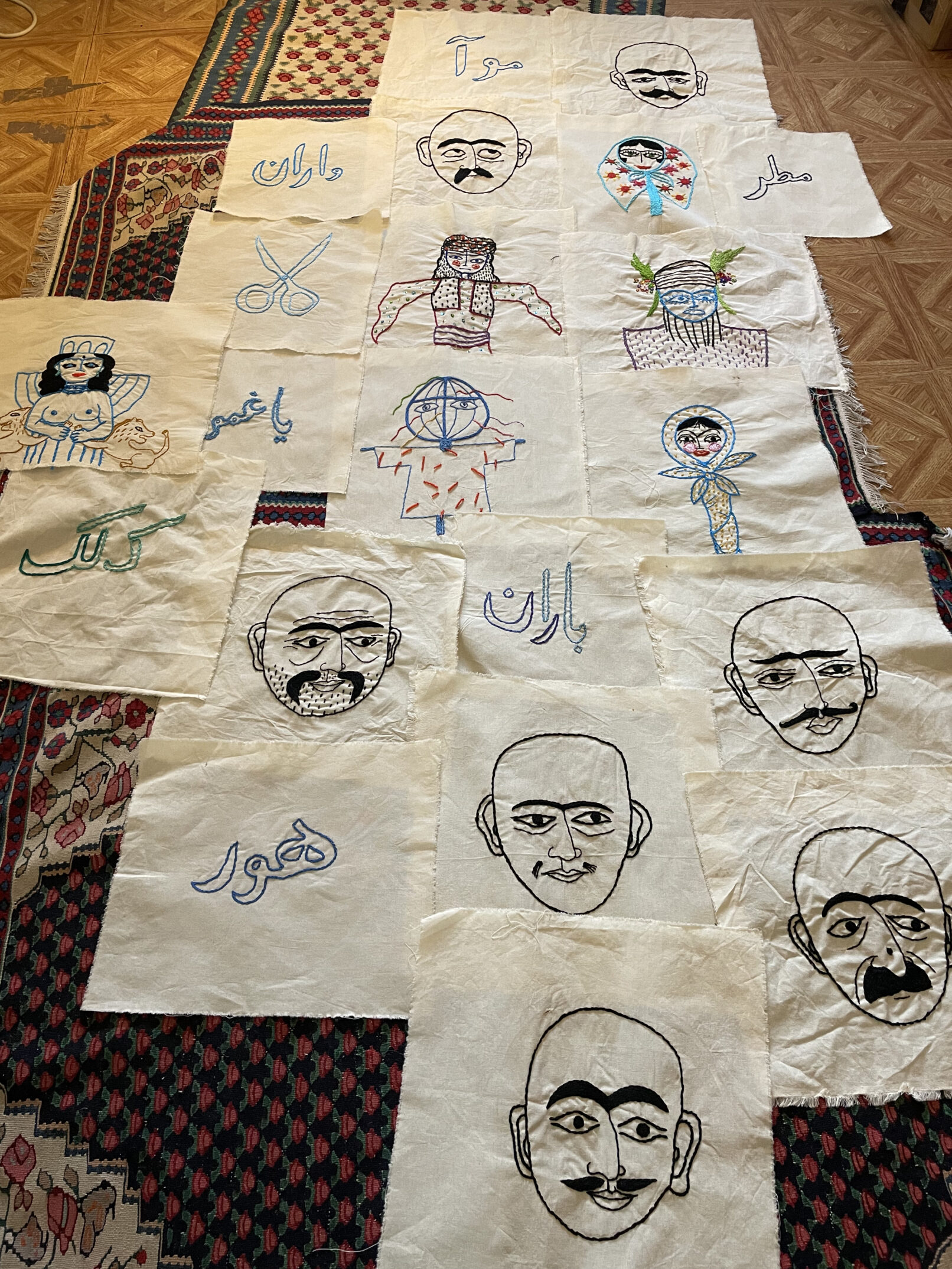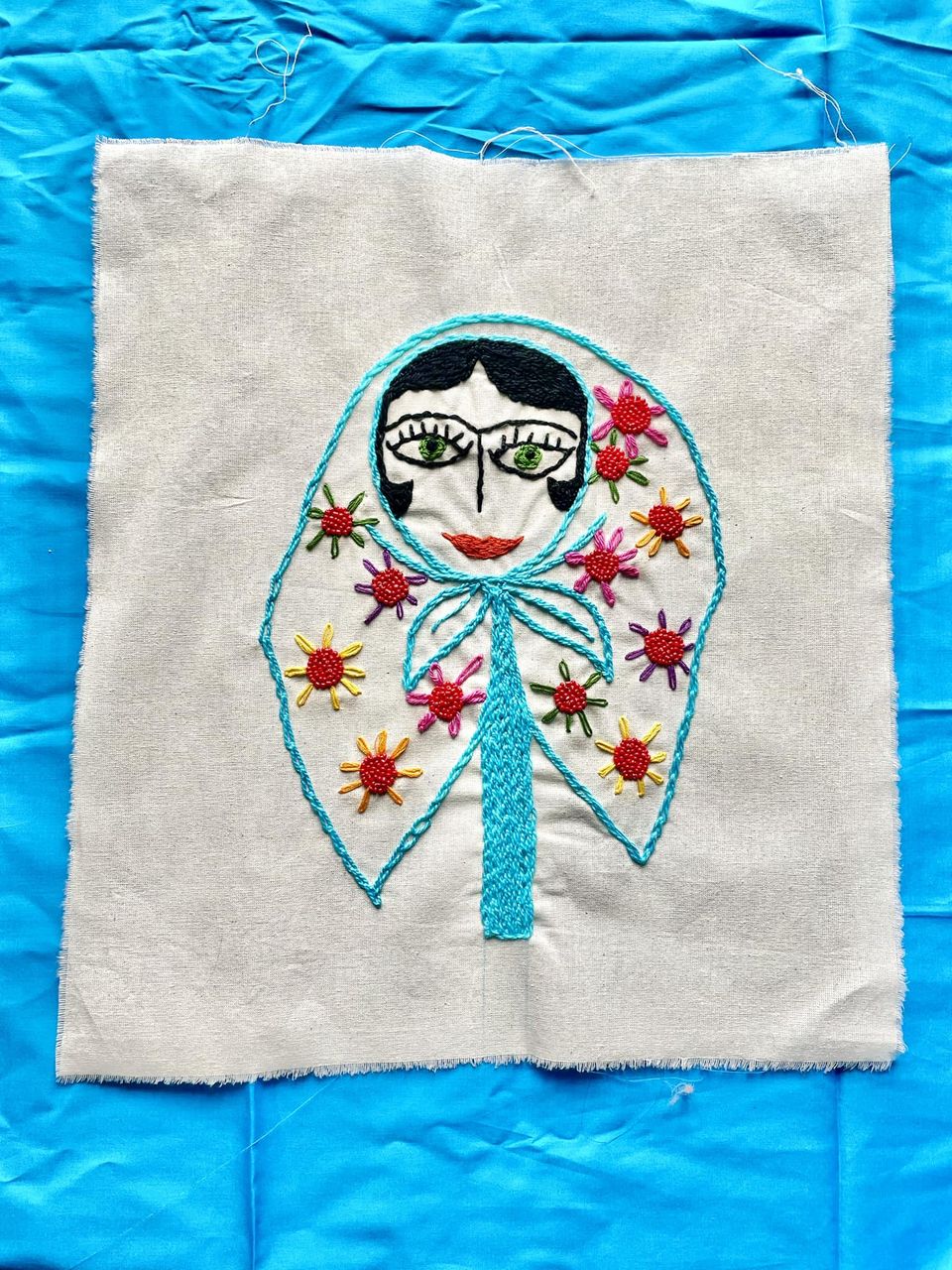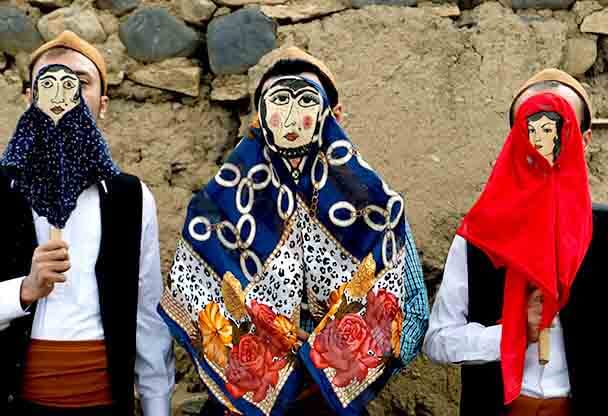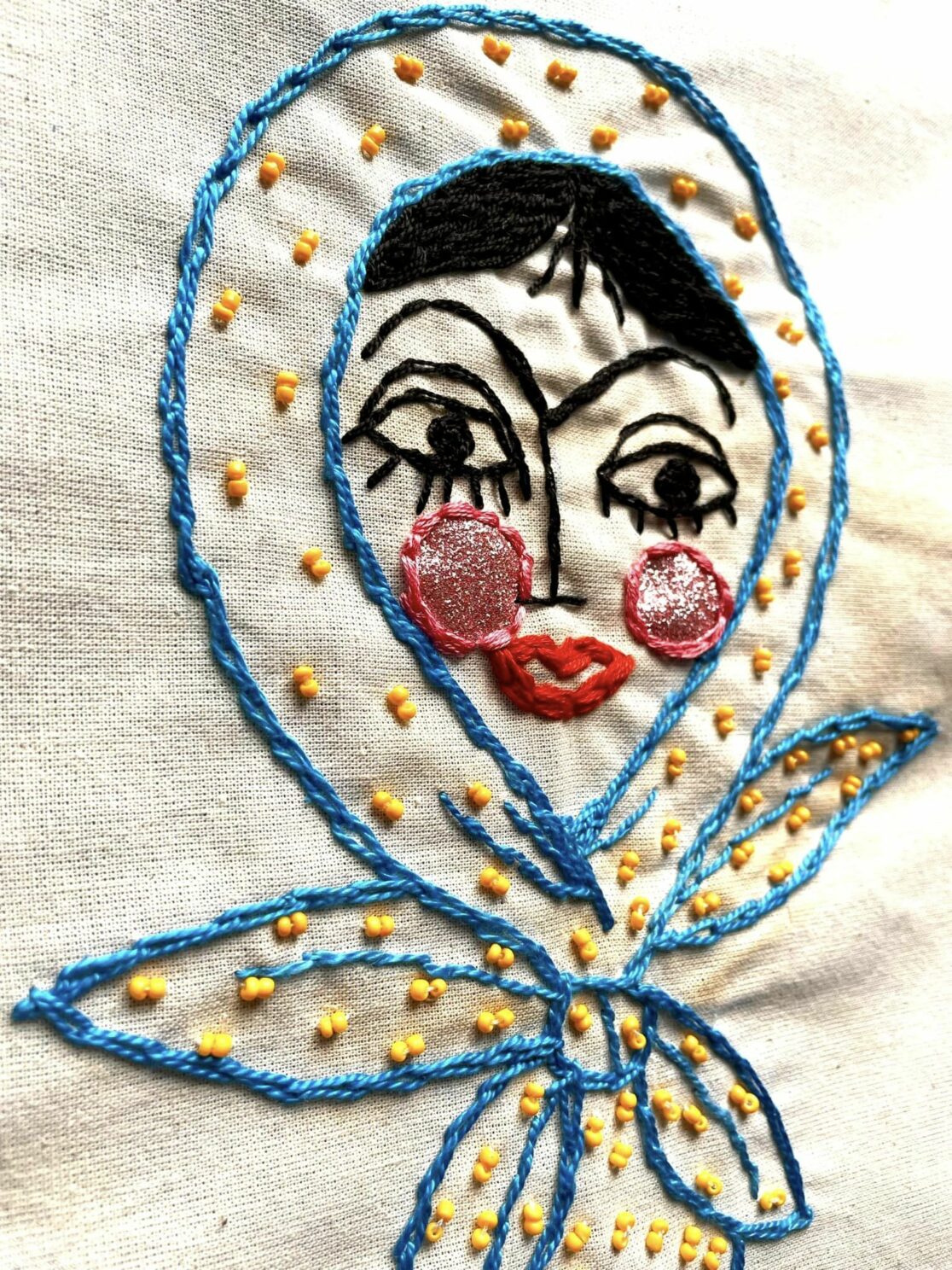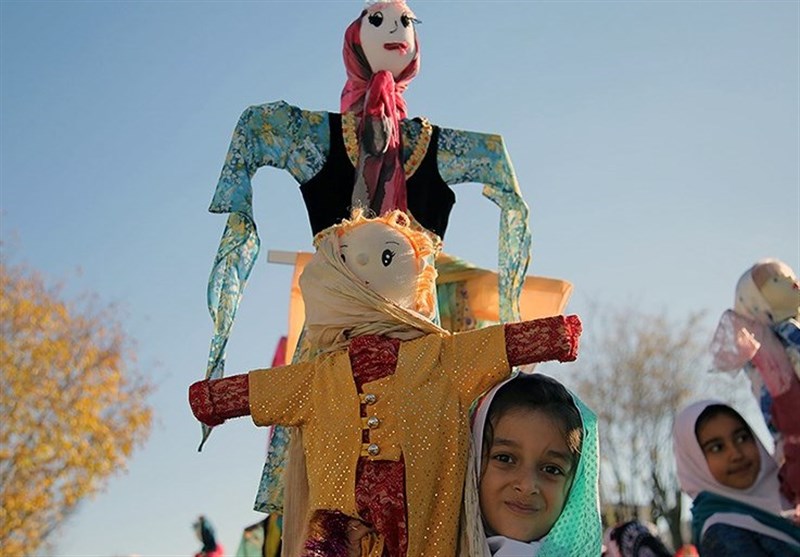“ Forty Prayers for the Rain”
“ Forty Prayers for the Rain”
“FEW” (Fête de l’Eau Wattwiller)
2024
In Persian mythology, Iran has always been plagued by drought, symbolized by a demon battling the water dei- ty. Despite Islamic beliefs, we continue to practice pagan rituals to invoke rain from north to south Iran. These rituals, common to different ethnic groups in Iran, involve the making of dolls representing the goddess Mitra, the goddess of water. Children sing folk songs in their own language, asking for rain to revive the land and drive away the demon of drought.
As part of the project for “FEW” 2024, I have chosen to create 40 prayer flags for rain, inspired by the Buddhist concept that the wind carries prayers to the gods. These flags will be representations of various rain dolls from Iran. While I am far from my country, I hope that the wind will carry these prayers for rain to Iran.
Embroidery has emerged as the ideal technique for this work, as it is repetitive, like a mantra prayer. Many be- liefs, including those of Iran, consider embroidery to be a form of magic: when the image is formed with needle and thread on the fabric, power is infused into the ob- ject. Whoever uses this embroidery as decoration or an object in their home should know that it is imbued with magic and can bring good or bad fortune.
The number forty has a special significance in Persian magical beliefs, hence my choice to make forty flags in this installation, each measuring 40×40 cm.
“ Quarante prières pour la pluie”
“FEW” (Fête de l’Eau Wattwiller)
2024
Dans la mythologie perse, l’Iran a toujours été confronté au problème de la sécheresse, symbolisée par un démon combattant la divinité de l’eau. Malgré les croyances islamiques, nous continuons de pratiquer des rituels païens pour invoquer la pluie du nord au sud de l’Iran. Ces rituels, communs à différentes ethnies d’Iran, impliquent la fabrication de poupées représentant la déesse Mitra, déesse de l’eau. Les enfants chantent des chansons folkloriques dans leur propre langue, demandant la pluie pour revivifier la terre et chasser le démon de la sécheresse.
Dans le cadre de projet pour “FEW” 2024, j’ai choisi de créer 40 drapeaux de prière pour la pluie, m’inspirant du concept bouddhiste selon lequel le vent transporte les prières aux dieux. Ces drapeaux seront des représenta- tions de diverses poupées de pluie d’Iran. Alors que je suis loin de mon pays, j’espère que le vent portera ces prières pour la pluie vers l’Iran.
La broderie s’est imposée comme la technique idéale pour cette œuvre, car elle est répétitive, telle une prière mantra. De nombreuses croyances, dont celles de l’Iran, considèrent la broderie comme une forme de magie : lorsqu’on forme l’image à l’aide de l’aiguille et du fil sur le tissu, on insuffle un pouvoir à l’objet. Celui qui utili- sera cette broderie comme décoration ou objet chez lui devrait savoir qu’elle est empreinte de magie et peut apporter la bonne ou la mauvaise fortune.
Le chiffre quarante revêt une signification particulière dans les croyances magiques persanes, d’où mon choix de réaliser quarante drapeaux dans cette installation, chacun mesurant 40×40 cm.
Croquis de l’installation des drapeaux de pluie quelques exemples de broderies
Marionette Chemchemeh Glín
"Chemchemeh Glín" is the name of a puppet known as the "rain bride" originating from the regions of Eastern and Western Azerbaijan, Ardabil, and Chaharmahal-va Bakhtiari. The name of this puppet means "big spoon puppet". The ceremony associated with Chemchemeh Glín is organized by the village children. One of the children takes the Chemchemeh Glín puppet and walks around with other children in the streets and alleys. Meanwhile, the village elders also go to the desert and pray for rain.
Atalo Matalo
The Atalo Matlo ritual:
In this ritual, young people gather to create a doll called "Atalo Matlo" from wood. The word "atlo" in the Khorasan dialect means someone who wears dirty clothes and doesn't bathe. The doll was dressed in old, tattered clothes and the young people would carry it through the streets, stopping in front of the houses of the wealthy. They would sing a song in unison, imploring rain.
"Atalo, Matlo, oh God, send rain,
Make the cascades rain,
Our Atalo is thirsty,
She has gone to the mountains and hills,
She wants a basin of water,
She wants a spring of milk...
Oh God, send rain,
Make it rain on the shepherds' sticks,
The shepherd wants cheese,
He wants bread and cheese,
Oh God, send rain,
Make the cascades rain,
The wheat is under the earth,
It is dying of thirst,
The rain is coming,
It will turn into flowers,
The wheat cultivators have no more heart,
Oh Lord, give us rain,
By the right of the King of men."
"کترا گیشه" translates to "Bride's Spoon" in French.
"Bride's Spoon" is an important ceremony in the culture of Ramsar (a region in northern Iran) and some other northern cities that have a close connection to the region's climate issues. It is a traditional spectacle for children. It is believed and will always be believed that children have pure and innocent hearts, acceptable to heaven, and therefore their requests are never left unanswered. "Spoon" means spoon and "Bride" means doll and puppet. From the beginning, you've probably thought that the northern regions receive enough rain, so why ask for rain? What's interesting is that the "bride's spoon" is actually a ceremony and a custom to ask not for rain, but for sunshine. While in the central and desert regions of Iran, people prayed for rain, in northern Iran, instead of rain ceremonies, they held sun ceremonies. Because excessive rainfall at certain seasons, at the time of rice harvesting and during a year of rice cultivation, means that the rice is not harvested in time and is washed away by the rain. During this ceremony, children were gathered and, making dolls (puppets) with straw, wood, shoes and a bride's clothes, they would walk in front of the group singing songs and hitting two spoons which were the symbol of food. The children would also follow with utensils such as a spoon or buckets, which they would hit to accompany her and repeat part of her speech. The bride would say: "Bride's spoon, take your time (Marry the spoon for a favorable time) / If not today, then tomorrow (if it's not done today, do it tomorrow) / The rotten grains.... / The bright rays... (the rays, the brilliance) Let the sun shine tomorrow." This group bringing the bride and the spoon in motion went out into the streets, squares, and neighborhoods and entered each house where the owner gave rice, eggs or something else. After collecting the gifts from people, which were poured into a bag or a bucket, they would return to cook the rice or prepare a wish soup and distribute it in the neighborhood.
"Buke Baraneh or Bride of Rain"
Inhabitants of Kurdish regions create this puppet for rain-making ceremonies. The Anahita Rainy Marionette is a symbol of Anahita. It is made from a sail and two pieces of wood, one short and one long. The puppet wears a headband, a shirt, pants, and a vest, and its eyes are made of colored beads.
Village women prepare clothes for the Anahita Rainy Marionette, and girls carry it from house to house singing a local song:
Hey Narân and Menârân (Specific names of regions in Kurdistan)
Lord, make it rain
For the poor and the needy
Lord, let it rain
The rain puppet wants water
She wants water for the mill
She wants eggs from young hens
She wants pins for young girls
The rain puppet wants water
هه ناران و مناران
یاخووا بکه به باران
بو فه قیرو هه ژاران
یاخووا باران بباری
بوکه بارانه ئاوی ده وی
ئاوی ناو ده غلانی ده وی
هیلکه باروکانی ده وی
ده رزی گه وره کچانی ده وی
بوکه بارانه ئاوی ده وی





